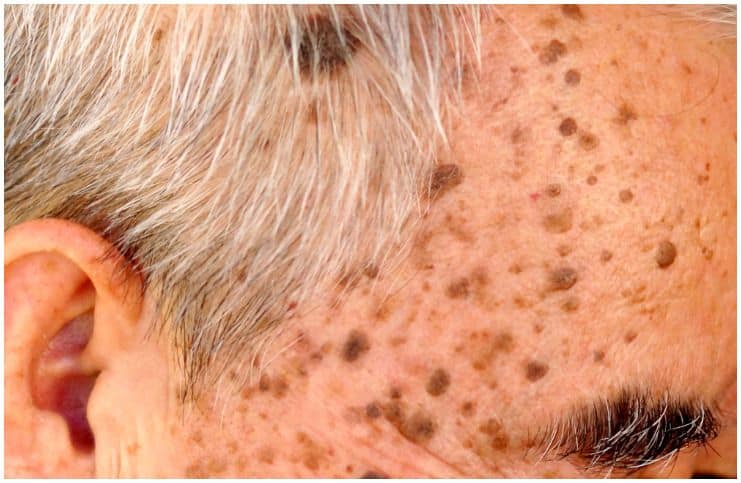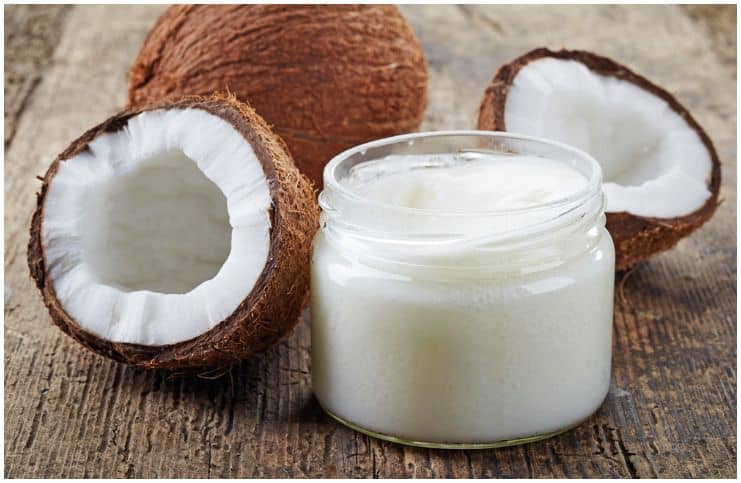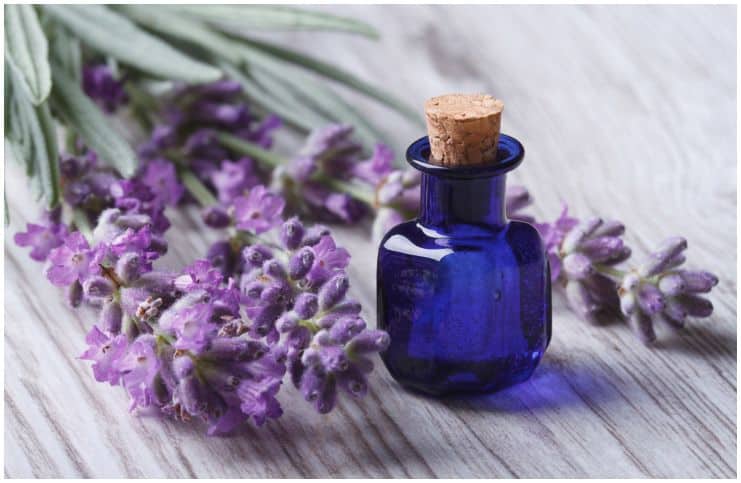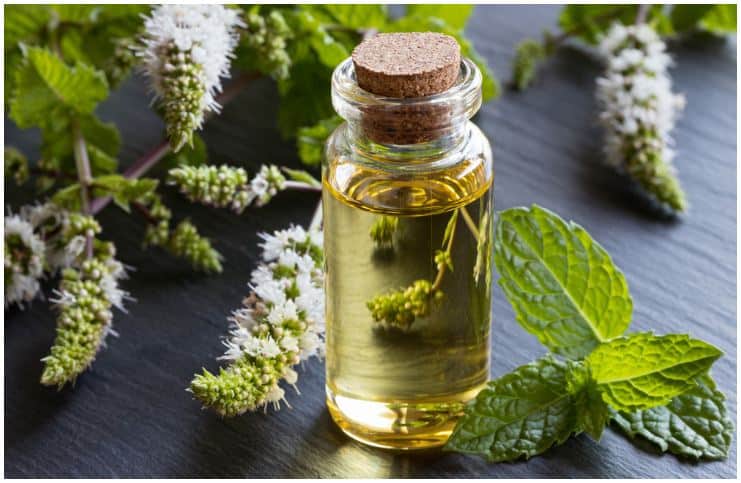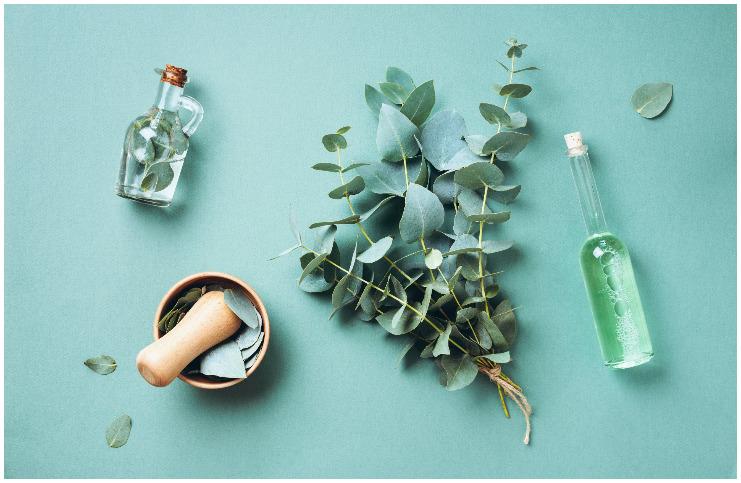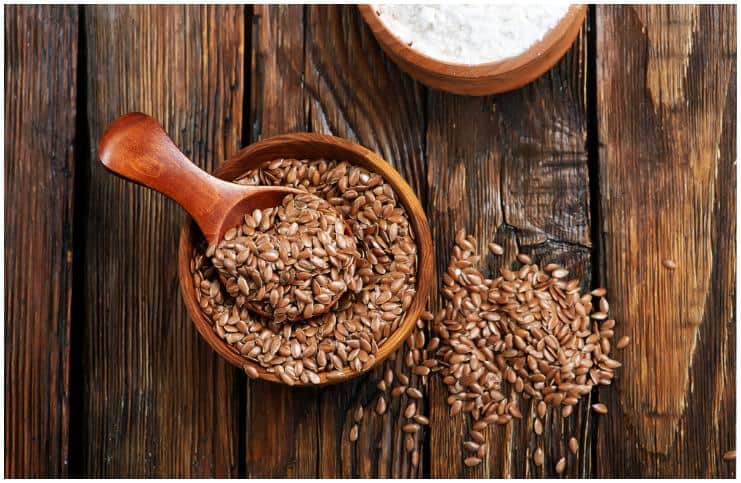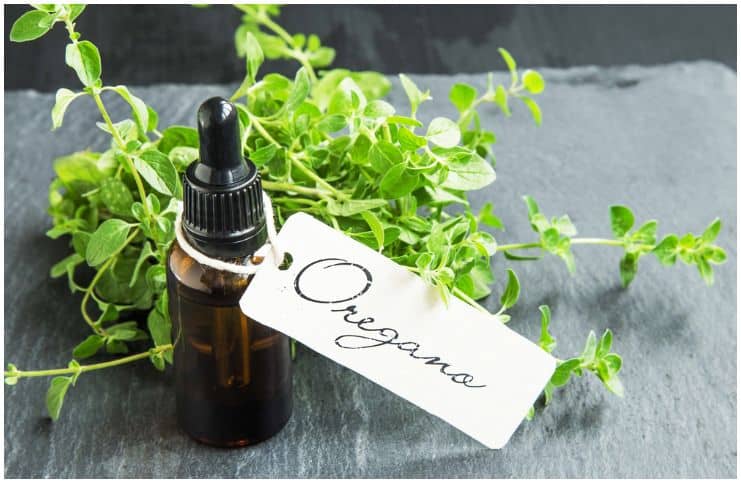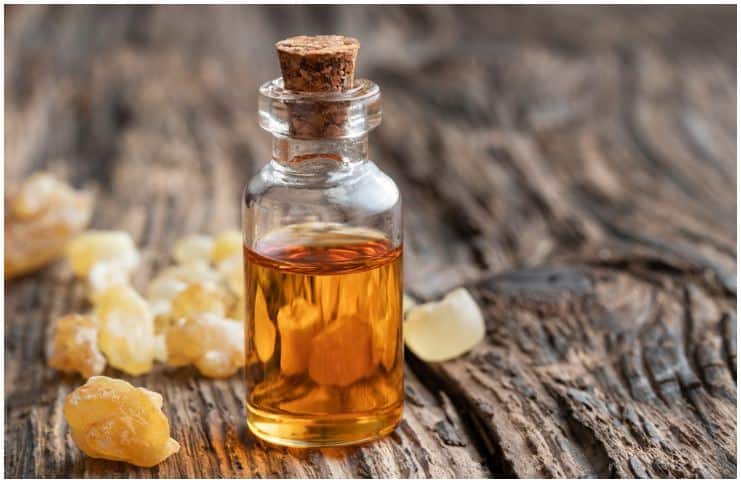Essential Oils For Seborrheic Keratosis:
Seborrheic keratosis (SK) is one of the most common noncancerous skin growths in seniors. It commonly appears as a pale, black, or brown growth on the shoulders, back, face, or chest.
Some SKs may appear with a surface texture that is waxy, smooth, or very flat.
Most lesions do not exceed 1 cm in diameter, while others grow larger than 3 cm. Their numbers vary, and one individual may have just one SK whilst others can have hundreds.
It may look like warts; however, it doesn’t contain the human papillomavirus, which causes warts.
SK occurs in females and males of all races, usually beginning to erupt in the 30s or 40s. According to the data, over 90 percent of adults over the age of 60 years have at least one seborrheic keratosis.
Causes
Dermatologists are not certain why SK develops.
But, there are a few factors that have been linked to an increased risk of SK, including:
- hormonal changes;
- sun exposure;
- age over 50 years;
- family history.
When to Call the Doctor
Have a dermatologist check your skin if:
- the growth is painful or irritated;
- there is a new growth;
- the growth that has borders that are irregular;
- growth has an unusual color, like – blue, purple, or reddish-black (when an SK turns black, it may be difficult to distinguish from skin cancer without a biopsy);
- there’s only one growth (SK typically exists as several);
- there is a change in the appearance of existing growth.
Note – SK typically does not cause symptoms, but, in some cases, it can itch or catch on clothing, leading to irritation.
Treatment
Because SK is benign, meaning that it is non-cancerous in nature, it requires no treatment and should not cause you to panic. But, for people who wish to have their SK removed, it may be possible to have them treated by a dermatologist.
Also, there are some home remedies available.
Here Is A List of 15 Essential Oils For Seborrheic Keratosis:
#1 Rosemary
Rosemary essential oil has been used for centuries due to its numerous beauty and health benefits. It is extracted from the popular herb of the same name, rosemary (Rosmarinus officinalis).
For instance, it has antiseptic and antimicrobial properties, which make it effective in efforts to eliminate dermatitis, eczema, acne, SK, and oily skin.
In addition, this oil is used for relieving flatulence and curing indigestion, constipation, stomach cramps, and bloating.
#2 Coconut
Coconut oil is famous throughout the world since it is a moisturizer for the skin and excellent massage oil.
It is able to penetrate the skin on a deeper level than most essential oils due to the way it bonds with proteins. Also, it can be a powerful weapon against bacteria, including Streptococcus mutans.
Note – virgin coconut oil appears to have more beneficial health effects.
#3 Lavender
It is steam-distilled from the purple flowers of the lavender plant. Due to its potent antimicrobial, sedative, antioxidant, anti-depressive, and calming properties, the lavender essential oil has been used both therapeutically and cosmetically for centuries.
Note – you can apply lavender oil diluted in coconut oil on the SK after you wash the area with clean water.
#4 Peppermint
Peppermint essential oil has powerful analgesic (pain-relieving), antioxidant, and antibacterial properties.
These attributes come together to make peppermint essential oil medicinally versatile for skin issues.
#5 Castor
Castor oil is a nonvolatile fatty oil that is produced from the seeds of the castor bean (scientifical name – Ricinus communis) plant, that belongs to the Euphorbiaceae family.
To use this essential oil, pour ¼ tsp of oil onto a small dish, then add a drop of frankincense or oregano essential oil. Combine together with a q-tip and apply on your seborrheic keratosis.
#6 Patchouli
It is extracted by steam distillation of the leaves of the patchouli plant (scientifical name – Pogostemon patchouli or Pogostemon cablin).
This essential oil was traditionally used in Asian folk medicine to treat hair problems and skin irritations, such as – acne, dryness, and eczema.
To receive the benefits of this oil, apply 3 drops of Patchouli oil directly to your SK or add several drops of patchouli oil to your daily moisturizer.
#7 Eucalyptus
Eucalyptus essential oil is obtained from the dried leaves of the eucalyptus tree. It can be used as:
- expectorant;
- analgesic;
- insecticidal;
- antibacterial;
- antispasmodic;
- anticatarrhal;
- antiviral agent;
- anti-inflammatory;
- anti-infectious.
All these properties make eucalyptus oil a very powerful tool against a variety of skin conditions.
#8 Flaxseed
It contains about 50 percent omega-3 fatty acids in the form of alpha-linolenic acid.
These fatty acids have a vital role in a range of bodily processes, such as – heart health, inflammation, and brain function.
When used on the skin, flaxseed essential oil can help:
- heal wounds and cuts;
- hydrate and moisturize;
- improve psoriasis;
- reduce skin sensitivity;
- reduce swelling, redness, and inflammation;
- improve rough, scaly skin.
#9 Jojoba
It is a liquid wax that is extracted from the nut of an American shrub which goes by the botanical name Simmondsia chinensis.
Jojoba oil is an emollient. This means that it moisturizes the skin and prevents irritations and rough patches.
Note – it can be used alone or in combination with other essential oils to make it more effective.
#10 Garlic
This essential oil is extracted from the bulbs of garlic (scientifical name – Allium sativa) through steam distillation method.
It contains anti-inflammatory and antibacterial agents that are beneficial for jock itch, athlete’s foot, various fungal infections, SK, and warts.
#11 Cedarwood
It is extracted from the wood pieces of a cedar tree, that has the scientific name Juniperus virginiana.
The main components of this essential oil are beta cedrene, cedrol, alpha cedrene, widdrol, and thujopsene, which contribute a great deal to its medicinal value.
#12 Oregano
It is derived from the herb using an extraction method called steam distillation.
This essential oil can benefit people who have skin conditions, like – candidiasis, eczema, rosacea, acne, psoriasis, and seborrheic keratosis.
#13 Frankincense
It was used by ancient Egyptians in embalming their revered departed due to the fact that it was believed that the frankincense essential oil naturally preserved the remains of their loved ones.
Note – before use, dilute frankincense essential oil with a suitable carrier oil, such as – coconut oil, since it is very potent and can cause severe skin irritations if used undiluted on the skin.
#14 Tea Tree
It is a volatile essential oil which is derived mainly from the Australian native plant with the botanical name Melaleuca alternifolia.
Tea tree essential oil is popular around the world for treating many health conditions, most likely due to its antiseptic properties, which kill microorganisms, such as – fungi, pathogenic bacteria, and viruses. It is also useful for moles and SK.
Note – do not apply tea tree essential oil directly to the skin. Dilute tea tree oil with a carrier oil, like – coconut oil, olive oil, or almond oil.
#15 Neem
It is a type of vegetable oil that is extracted from the fruits of the evergreen neem tree with the scientifical name Azadirachta Indica.
The vitamin E and fatty acids found in neem essential oil are easily absorbed into the skin and act as a free radical scavenger. This is useful for a range of skin issues, including seborrheic keratosis.
READ THIS NEXT:
Interesting Facts About Pharmacists & Pharmacies
Interesting Facts About Pediatricians
Dravet Syndrome – Life Expectancy
References https://www.ncbi.nlm.nih.gov/pmc/articles/PMC4828376/ https://www.ncbi.nlm.nih.gov/pmc/articles/PMC5367878/ https://jamanetwork.com/journals/jamadermatology/fullarticle/479104
